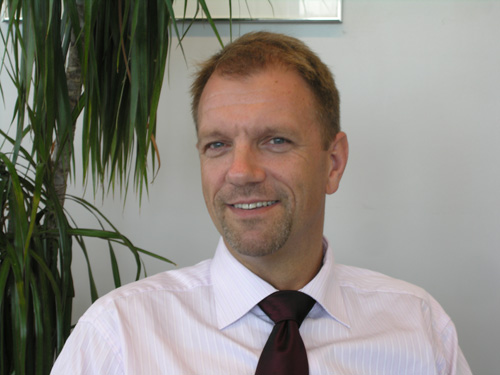MAIN PUBLICATION :
| Home � Executive Summary � Foreword |

|
Foreword
Hans van Steen
Head of Unit, Regulatory Policy and Promotion of Renewable Energy,
Directorate General for Energy and Transport (DG TREN), European Commission

It is a pleasure for me to introduce the new edition of Wind Energy – The Facts, produced by the European Wind Energy Association (EWEA) and supported by the European Commission in the framework of the Intelligent Energy Europe programme.
At the European Union (EU) level, the challenges related to energy and climate change are at the very top of the political agenda and, more than ever before, wind energy is proving its potential as an important part of the solution. Through its concrete contribution to clean and secure power generation, wind ensures that an increasing amount of electricity is produced without using fossil fuels, precious fresh water for cooling purposes and without emitting greenhouse gases or harmful air pollutants.
The deployment of wind energy continues to be a success story in the EU. More and more Member States have joined the initial front-runners, and wind continues to be one of the fastest growing forms of electricity generation in Europe. Wind turbine technology continues to improve, larger and more efficient technologies are being deployed and offshore applications are coming on-stream.
The European Commission is convinced that there is a large untapped potential of renewable energy in Europe, making the agreed target, a 20 per cent share of the EU’s energy mix by 2020, ambitious yet achievable.
However, meeting this target will not become a reality without strong commitments at all levels, including national governments and the renewables industry itself. Large-scale integration of wind energy into electricity grids and markets poses significant challenges to the sector – challenges that will require researchers, transmission systems operators, energy companies, regulators, policymakers and other stakeholders to work closely together to constructively consider appropriate solutions.
This publication provides an excellent, highly readable and comprehensive overview of the diverse issues of relevance to wind power. Given the growing importance of wind in the European energy sector, it is a useful reference document, not just for the sector itself, but more widely for policy- and decision-makers.
EWEA Foreword
Arthouros Zervos
President, European Wind Energy Association

It has been five years since I wrote the foreword to the 2004 edition of Wind Energy – The Facts, and in that short time there have been major, positive changes in the European wind power industry. For the most part the environmental, regulatory, technological, financial, and political questions surrounding the industry in 2004 have now been satisfactorily answered.
Cumulative installed wind capacity is perhaps the most relevant proof of this amazing success story. By the end of 2003, the EU-15 had installed more than 28,000 megawatts (MW) of wind turbine capacity. By the end of 2007, the enlarged EU-27 had in excess of 56,000 MW of capacity.
These 56,000 MW met 3.7 per cent of total EU electricity demand, provided power equivalent to the needs of 30 million average European households, and avoided 91 million tonnes of carbon dioxide emissions. In addition, there were billions of euros saved on imported fuel costs in 2007, while more than €11 billion was invested in installing wind turbines in Europe.
A deepening political concern has also emerged over the past five years with regard to climate change and energy. Politicians are seeking viable and powerful solutions to the challenges of escalating oil prices, depleting fossil fuel reserves, dependence on foreign energy supplies and the potential ravages of global warming. Now, more than ever, our elected leaders are looking for solutions to these complex and critically important issues.
As a result, the EU has set a binding target of 20 per cent of its energy supply to come from wind and other renewable resources by 2020. To meet this target, more than one-third of European electrical demand will need to come from renewables and wind power is expected to deliver 12 to 14 per cent (180 GW) of the total demand, wind energy thus playing a leading role in providing a steady supply of indigenous, green power.
We feel it is the right time to update Wind Energy – The Facts in order to address further changes in this rapidly expanding industry, both in Europe and globally. Both market and turbine sizes have grown immeasurably since 2003, prompting an entirely new set of considerations. With all this additional power being created, issues such as grid access, new and strengthened transmission lines and system operations have to be dealt with in a fair, efficient and transparent way. The relatively new offshore wind industry has astonishingly rich potential, but needs to be helped through its infancy, and the supply chain bottlenecks created by this rapid growth still need to be overcome.
I hope this latest edition of Wind Energy – The Facts helps to provide a pathway to a truly sustainable future. I remain confident that the wind power industry will overcome the challenges it faces and achieve even greater success.

Arthouros Zervos
President, EWEA
Executive Summary
Since the last edition of Wind Energy – The Facts was published in February 2004, the wind energy sector has grown at an astonishing rate and is now high on the political agenda. With the looming energy crisis, calls are increasing for an immediate and concrete solution to the many energy and climate challenges the world is currently facing – and wind energy offers just this.
In order to facilitate informed choices and policy decisions, a clear and profound understanding of the wind power sector is required. This volume aims to contribute to this knowledge dissemination by providing detailed information on the wind power sector. Wind Energy – The Facts provides a comprehensive overview of the essential issues concerning wind power today: wind resource estimation, technology, wind farm design, offshore wind, research and development, grid integration, economics, industry and markets, environmental benefits and scenarios and targets.
Since 2004, wind energy deployment has risen dramatically. Global installed capacity increased from 40,000 megawatts (MW) at the end of 2003 to 94,000 MW at the end of 2007, at an average annual growth rate of nearly 25 percent. Europe is the undisputed global leader in wind energy technology: 60 per cent of the world’s capacity was installed in Europe by the end of 2007, and European companies had a global market share of 66 per cent in 2007. Penetration levels in the electricity sector have reached 21 per cent in Denmark and about 7 and 12 per cent in Germany and Spain respectively. Achievements at the regional level are even more impressive: the north German state of Schleswig-Holstein, for example, has over 2,500 MW of installed wind capacity, enough to meet 36 per cent of the region’s total electricity demand, while in Navarra, Spain, some 70 per cent of consumption is met by wind power.
Figure S.1: Global Cumulative Wind Power Capacity, 1990-2007 (in MW)

Source: GWEC/EWEA (2008)
Figure S.2: Global Annual Wind Power Capacity, 1991-2007 (in MW)

Source: GWEC/EWEA (2008)
A huge step was taken in March 2007, when EU Heads of State adopted a binding target of 20 per cent of energy to come from renewables by 2020. In January 2008 the European Commission released a renewables legislation draft, proposing a stable and flexible EU framework which should ensure a massive expansion of wind energy in Europe. If such positive policy support continues, EWEA projects that wind power will achieve an installed capacity of 80,000 MW in the EU-27 by 2010. This would represent an overall contribution to the electricity supply of 5 per cent . By 2020 this figure is expected to increase to 12–14 per cent, with wind power providing energy equal to the demand of 107 million average European households.
| Acknowledgements | Sitemap | Partners | Disclaimer | Contact | ||
|
coordinated by  |
supported by  |
The sole responsibility for the content of this webpage lies with the authors. It does not necessarily reflect the opinion of the European Communities. The European Commission is not responsible for any use that maybe made of the information contained therein. |
